I didn't notice the moment when boring got so cool. I was too busy clearing my shelves of CDs to make space for my stationery collection. While style magazines began raving about "normcore" and the virtues of plain grey clothes, and when staying in became the new going out, I was documenting my collection of notebooks, staplers and ringbinders. I had replaced my love of music with my love of pens. I knew there were others out there: Twitter had led me to like-minded souls, leading to the formation of Stationery Club, a sort of stationery equivalent of a book club (although I began to doubt how serious some of the members were: I'd ask how many staplers people owned, and the answers would be in single figures). But this year, the humdrum became super-popular. To my surprise, tickets for my annual Boring Conference (I'm on year four) sold out in minutes.
"How should we take account of, question, describe what happens every day and recurs every day?" asks the French writer Georges Perec in his 1973 essay on the "infra-ordinary" (his word for everything that's the opposite of "extraordinary"). Perec challenges us to question the habitual. "But that's just it, we're habituated to it. We don't question it, it doesn't question us, it doesn't seem to pose a problem, we live it without thinking, as if it carried within it neither question nor answers, as if it weren't the bearer of any information."
Perec's point is that everything contains information. It's just that, sometimes, it takes a bit of work to notice it. These days, an audience and a platform can be found for even the most niche interests, as people demonstrate that nothing is truly boring – not if you look at it closely enough.
Over the past few years, I've been lucky enough to meet some of the most interesting boring people in the UK and find out what motivates them. One of the most intriguing is Peter Fletcher, 45, from Birmingham. Since 2007, he has made a note of every one of his sneezes, recording the time, the date, his location, a brief description of what he was doing, and a measure of strength (mild, moderate, moderate to strong, strong, and very strong). Each sneeze is recorded in his notebook like an entry from a diary and added to his blog. But unlike other diaries, his focuses on the least significant thing that happened to him that day. The sneeze acts as a single frame in the stop-motion animation movie of his life, capturing moments that would otherwise be lost for ever.

"There was a time when it felt odd seeing people sneeze and not writing it down," Peter says. "I felt like they were missing out." As he's preparing to study for an MSc in medical statistics, there's an obvious overlap between Peter's area of academic study and the counting of sneezes, but despite this he hasn't mentioned it to his colleagues. "I had an interview, but I didn't bring it up, because they might think that I'm just this weirdo, latching on to this serious research area because of some odd obsession. But, really, I'm not interested in statistics because I've been counting my sneezes. And I'm not counting my sneezes because I'm interested in statistics. Both those things have a common root, which is that I'm interested in the underlying structure of things. I think counting sneezes gives you a way to start seeing patterns in life."
I speak to him on the phone. I hope he might sneeze during our conversation, but am sadly disappointed. I ask if he has a favourite sneeze. "Sneeze No 42 is the one I always come back to. 'Marquee, Norfolk. Strong. Looking at quiche.'" What was so special about that one? "Sneeze 42 was very early on. It was when I first realised that including what I was doing was so important. Before, I thought, 'I'm not really doing anything.' But then I realised that, no, I am doing something – I'm looking at quiche. That's what I'm doing, so it goes down in the notebook. Otherwise, you're going to get the diary that only has 'Watching Manchester United score the winning goal at the Champions League', or whatever it is. You're only ever going to record the times when something supposedly dramatic is happening, instead of recording what is really happening."
Scrolling through his blog, Sneezecount, I find my own favourite sneeze of his: sneeze No 2,854: "Front room, Moderate. Between turning the TV on and it coming on." It beautifully illustrates the way that he turns a non-moment into a moment.
Of course, sneeze No 2,854 isn't really sneeze No 2,854; sneeze No 1 wasn't really sneeze No 1. Peter had been sneezing for several decades before he started counting them. But despite this arbitrary starting point, there's a definite end point for any sneeze count. "You realise after a while that the counting of sneezes is about counting out your life. The act becomes an expression of your own mortality." The sneeze count goes up, but it could equally be seen as a countdown to an inevitable end.
Leila Johnston, 34, is proud to be boring. She presents the Shift Run Stop podcast, which celebrates geek culture and produces events dedicated to themes such as time travel and the nature of reality. She collects photographs of tills made by IBM. She grew up in Greenock, Inverclyde, in an area known as Silicon Glen. Greenock was home to a large IBM plant, which dominated the town and her childhood. Years later, when Leila moved to London, she found herself taking photographs of IBM tills while out shopping – the logo acting as a kind of anchor in an unfamiliar city.
"It's no weirder than being addicted to an iPhone game or looking after your roses," she insists. "When I left town, I would start to see opportunities to get 'exotic' ones in Watford or Brighton." But why tills? "Tills are everywhere. Why aren't people more interested in them?" she asks. "If the urban landscape was a jungle, every single till would be obsessively documented by everyone with a sense of curiosity. But these things become detached from what it's OK to have curiosity about."
What about people without that sense of curiosity? "I do slightly feel like people are missing out on a layer of interest in their lives by not even noticing the cash register," she says. Three years ago, Leila began to upload the photos to Instagram with the hashtag #ibmtills. Then other people started to join in, with photos sent in from France, Australia and the US. "That's when I had to develop some rules," she says. "Everyone else's were always wrong. Some weren't even IBM, and if you couldn't see the logo, then what was the point? That's the main rule: get the logo in shot. The trouble is, you have to take the photo quite fast so as not to unnerve the checkout person, so often the photos are very poor quality."
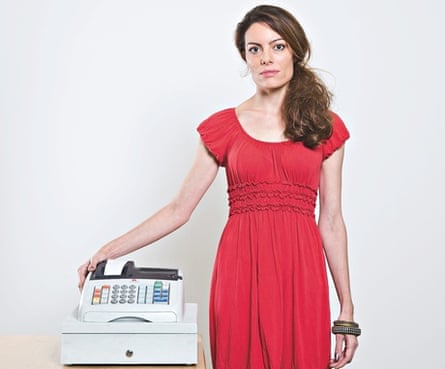
I ask if she's ever been caught. "I think I've been clocked a few times" she admits. She has also bought items from shops specifically to get a good shot of the till. "If readers are interested, there's a great row of them at Boots in St Pancras station, with a glass window behind, and usually mostly unstaffed. You can get a whole row at once from the checkout side."
It might be awkward having to explain what you're doing if you get caught surreptitiously taking a photograph of the till in your local branch of Boots, but Tim Steiner has more reason to be concerned about getting caught photographing his object of interest. Tim, 49, a composer and musician from London, runs a page about hand dryers on Facebook, so spends a lot of his time loitering in public toilets. "It's clearly such an odd thing to be doing, taking photographs in a public toilet," he says. "People could really get the wrong idea. I'm not worried if people think I'm weird for taking a photo of a hand dryer, but they might think I'm taking a photograph of something else for some other purpose. But I'm not – I'm only interested in the hand dryers."
Tim's interest in hand dryers was a spin-off from an earlier interest in lifts. "I found that, wherever I travelled in the world, the elevators were all made by four or five companies. There didn't seem to be very many elevator companies, but I was drying my hands one day and I noticed that there seemed to be lots more different hand dryer companies, so I switched my allegiance, knowing that there was this whole sea of things to explore. I got tired of seeing Schindler and ThyssenKrupp lifts everywhere, but with hand dryers, for the first couple of years, nearly every day I would find a new model or often even a new manufacturer. It's like this never-ending process of discovery."
But just because Tim is interested in hand dryers, he is not necessarily an advocate. "I'm not a great fan of using hand dryers. I wouldn't sign up to any of them as being particularly brilliant," he says. "Because I've photographed a lot of dryers, people assume I think they're all really good and that I really like hand dryers. But that kind of drives me nuts. I have an interest in them, but it doesn't go with that that I like them at all. Actually, I'm not that fussed about them as bits of useful kit."
For Tim, hand dryers represent the opportunity of discovery: a world of diversity hidden within the mundane. Focusing attention on something as seemingly insignificant as electric hand dryers suddenly reveals the complexity and chaos of modern life.
This interest in the everyday is shared by Emily Webber, who documents London's shop fronts on her blog. Emily, 36, works as a project manager for a digital agency and, as well as photographing shop fronts, she runs the Yeah! Hackney forum, celebrating the area of east London she calls home. Community, identity and place are clearly important to her. "There is a timeliness about it," she says of her shop-front project. "A sense that some of these shops won't be around that long. Particularly the older ones – the really interesting 50s launderettes, for example. You see those change, so you've got to get them before they get changed into something bland, a supermarket or something."
Emily's collection of shop fronts developed organically from an interest in street photography. "A shop front fits a photo so perfectly. It works really well. It's as if it was made for taking pictures of it." Gradually, she developed a set of rules for her photo. All of the photos are taken straight on, during the daytime. The shops can't be chains. People are banned. "When you look at pictures with people in, you look at the people and not the things around them." Applying these rules to such diverse shop fronts highlights their similarities and risks making them seem uniform, but somehow every building has its own story. "The thing about buildings is, you don't own them, not really; the building will outlive you. You're just a custodian of it. So what you see in some of the really interesting shop fronts is the layers of history and people that have had that shop, and the crazy decisions and changes that have been made along the way. That sense of place and that sense of area get lost when every high street looks the same and has the same signage. When it's all cleaned up, then that's all removed." Emily's blog has gone from quirky interest site to valuable historical document.
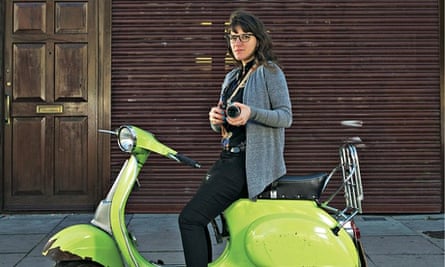
The beauty of boring obsessions is their simplicity. Focusing your attention on something you're going to do anyway – drying your hands or walking along the high street – means the hobby can run in the background while you get on with things. But adding a layer of observation can transform mundane moments. "It does something really exciting to the dead time of waiting," explains sound artist Felicity Ford, who records the noises made by vending machines. "It means that whatever you would have been thinking about while you're standing at the vending machine – 'What am I going to do tonight?' 'Oh, I should really answer that email' – all those thoughts get replaced with a very present engagement with what's right there in front of you."
Just as Leila would sometimes buy something to get a good shot of the till, so Felicity, 35, from Oxford, has found that her interest in these sounds will lead her to buy a cup of coffee to get a new recording. "It was almost like a reversal of what the machine was supposed to be for. I was going to it so that it could vend me a sound, and the byproduct of that was a chocolate bar or whatever. I enjoyed this idea of revising and reinventing this machine just by thinking about it differently. And then I'd get my recording and be like, 'Oh, does anyone want a Snickers?' I've got my sound recording, that's what I came for." Like taking photos of tills or hand dryers, recording the sounds of vending machines might seem strange to an onlooker. "I started off using a little handheld recorder, which is really nice and discreet and means you can be anonymous. I also made a couple of recordings with quite a conspicuous condenser microphone. It's big and fluffy with a windshield on it, so I look a bit like a reporter. That's interesting because people are looking at you thinking, 'What on Earth are you doing?'" How does she respond? "I enjoy it, because then you have this conversation with people and you say, 'I'm recording the vending machine.' And you explain how they all sound different, and you ask them, 'Have you ever listened to a vending machine before?' And then they get it and start to talk about how their Xbox has a really different sound from their PlayStation, or start talking about their boiler. People connect to it quite quickly when you start to talk about all the technology you use."
As for my own collection, to be honest, it started by accident. I had always been interested in stationery and had often bought pens and notebooks without any real desire to use them, but rather because I liked them as objects in and of themselves. Looking in a stationery shop one day (Fowlers Stationery, Worcester Park, Surrey), I found at the back of a shelf an old desk tidy (a Velos 1377) that had clearly been there for years. I took it home and realised that stationery – seemingly so ephemeral and transitory – could have a much longer shelf life. I went straight to eBay and have never looked back. I now have a stapler from every decade of the 20th century, and am proudest of my unsharpened Eberhard Faber Blackwing 602 pencil.
In his essay on the "infra-ordinary", Georges Perec presents a series of questions. He asks us to make an inventory of the items in our pockets, to describe our street and compare it with another street, to question our teaspoons. "It matters little to me that these questions should be fragmentary," he writes. "It matters a lot to me that they should seem trivial and futile: that's exactly what makes them just as essential [as], if not more so [than], all the other questions by which we've tried in vain to lay hold of our truth."
Quentin Crisp once wrote about the difference between identity and lifestyle. An identity is a ragbag collection of characteristics you happen to have been born with, he said; your lifestyle is what happens when you take one of those characteristics and make it define who you are. "If, when you peer into your soul, you find that you are ordinary, then ordinary is what you must remain," Crisp wrote. "But you must be so ordinary that you can imagine someone saying, 'Come to my party and bring your humdrum friend,' and everyone knowing he meant you." I'm not ashamed of being that humdrum friend, and at least it means I now get invited to parties.
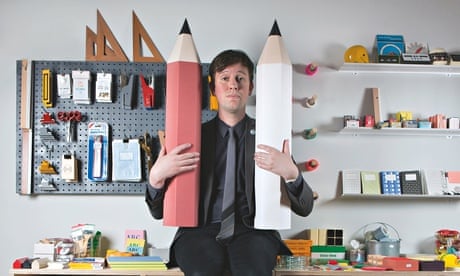


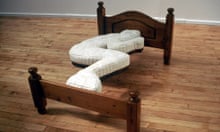

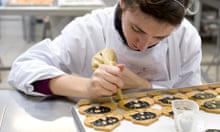
Comments (…)
Sign in or create your Guardian account to join the discussion